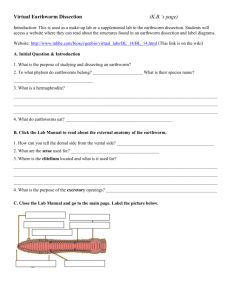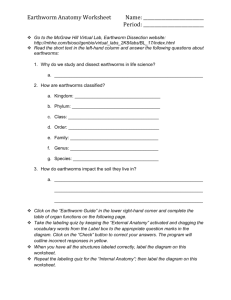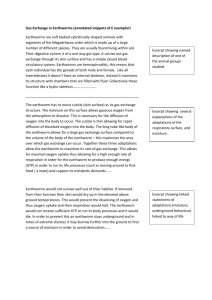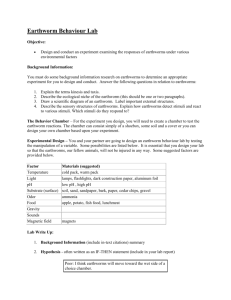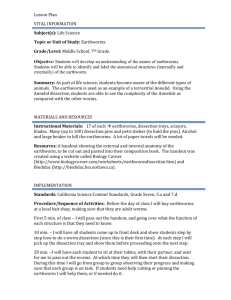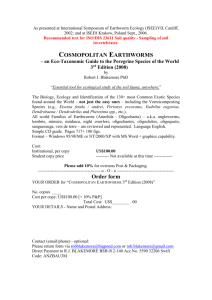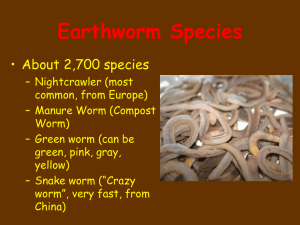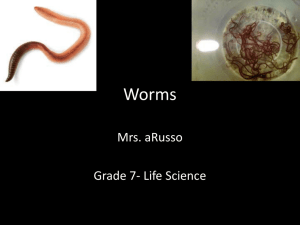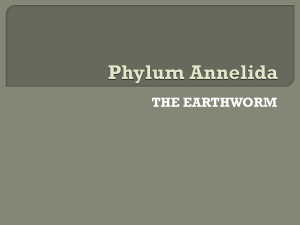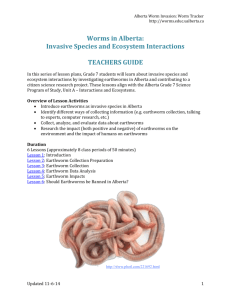The earthworm's ____ - or throat
advertisement
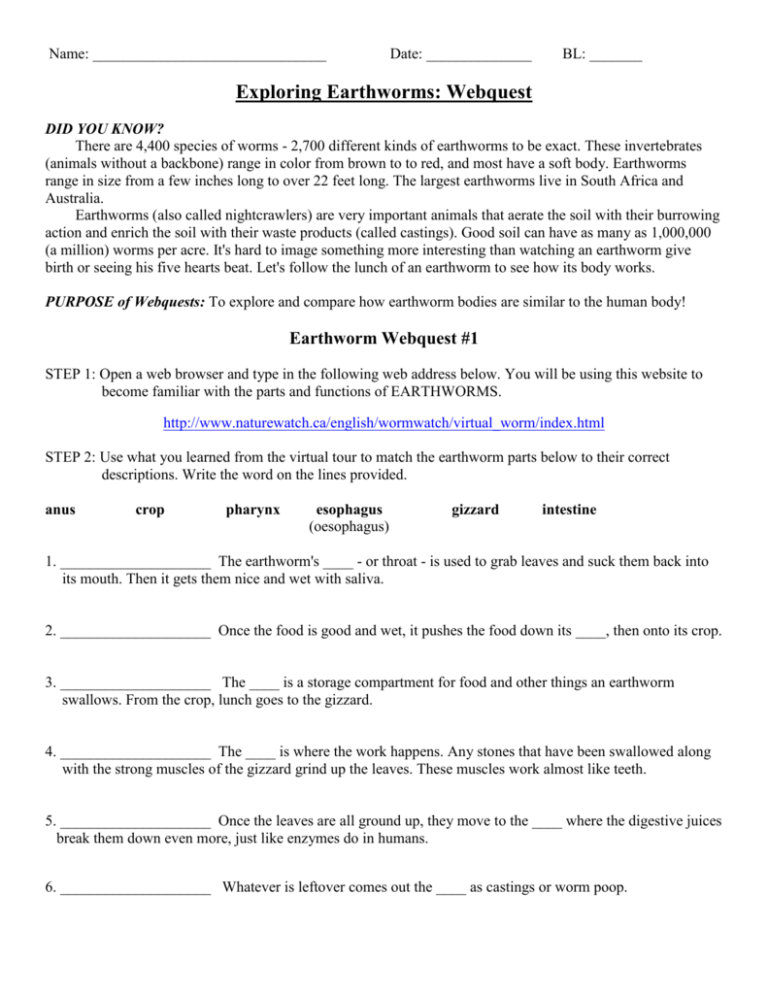
Name: _______________________________ Date: ______________ BL: _______ Exploring Earthworms: Webquest DID YOU KNOW? There are 4,400 species of worms - 2,700 different kinds of earthworms to be exact. These invertebrates (animals without a backbone) range in color from brown to to red, and most have a soft body. Earthworms range in size from a few inches long to over 22 feet long. The largest earthworms live in South Africa and Australia. Earthworms (also called nightcrawlers) are very important animals that aerate the soil with their burrowing action and enrich the soil with their waste products (called castings). Good soil can have as many as 1,000,000 (a million) worms per acre. It's hard to image something more interesting than watching an earthworm give birth or seeing his five hearts beat. Let's follow the lunch of an earthworm to see how its body works. PURPOSE of Webquests: To explore and compare how earthworm bodies are similar to the human body! Earthworm Webquest #1 STEP 1: Open a web browser and type in the following web address below. You will be using this website to become familiar with the parts and functions of EARTHWORMS. http://www.naturewatch.ca/english/wormwatch/virtual_worm/index.html STEP 2: Use what you learned from the virtual tour to match the earthworm parts below to their correct descriptions. Write the word on the lines provided. anus crop pharynx esophagus (oesophagus) gizzard intestine 1. ____________________ The earthworm's ____ - or throat - is used to grab leaves and suck them back into its mouth. Then it gets them nice and wet with saliva. 2. ____________________ Once the food is good and wet, it pushes the food down its ____, then onto its crop. 3. ____________________ The ____ is a storage compartment for food and other things an earthworm swallows. From the crop, lunch goes to the gizzard. 4. ____________________ The ____ is where the work happens. Any stones that have been swallowed along with the strong muscles of the gizzard grind up the leaves. These muscles work almost like teeth. 5. ____________________ Once the leaves are all ground up, they move to the ____ where the digestive juices break them down even more, just like enzymes do in humans. 6. ____________________ Whatever is leftover comes out the ____ as castings or worm poop. Earthworm Webquest #2 STEP 1: Open a web browser and type in the following web address below. You will be using this website to become even more familiar with the parts and functions of EARTHWORMS. http://urbanext.illinois.edu/worms/ STEP 2: Click on the following link titles and read the passages to help you complete the table below: “My Mouth” “How I Digest” “My Five Hearts” “How I Breathe” DO HUMANS HAVE THIS? YES Is it different in any way? How? (location, quantity, functions, etc.) Mouth Heart Gizzard Intestine Anus Skin NO Do humans have something different or similar that provides the same function? Like what? 1. Click on the “Segments & Setae” and “How I Move” link titles and read the passages: How is movement different for an earthworm than for a human? (Summarize!) _______________________________________________________________________________________ __________________________________________________________________________________________ 2. Click on the “My Body” link title and read the passage: What things do humans have that earthworms definitely DO NOT? 3. Click on the “Light Sensitivity” link title and read the passage: How can earthworms tell if it’s day or night outside if they don’t have eyes?! _______________________________________________________________________________________ __________________________________________________________________________________________ **Once finished, feel free to go back to the HOME page (the link is at the bottom) and explore some of the other links about worms that are listed at the top right portion of the webpage. ** STILL have more time? Take a look at these other awesome sites about Earthworms! http://kids.discovery.com/tell-me/animals/bug-world/worm-world http://www.buglife.org.uk/discoverbugs/wormweek/TeachingResources http://www.lapbooklessons.com/EarthwormLapbook.html http://sciencewithme.com/learn-about-earthworms/ http://animalstime.com/earthworm-facts-for-kids-facts-about-earthworms-for-kids/ http://pbskids.org/dragonflytv/show/wormfarm.html http://www.ars.usda.gov/is/kids/soil/story2/goodworm.htm BONUS: Can you label the parts of the Earthworm below?

